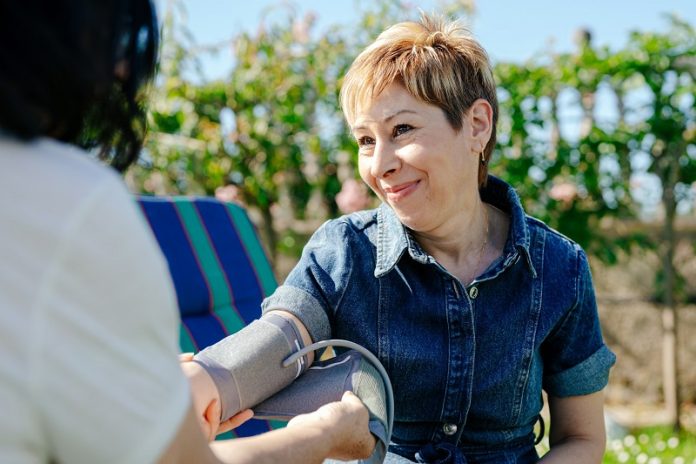
Checking your blood pressure at home is a simple but powerful way to take control of your health—especially if you have high blood pressure, also known as hypertension. This condition affects millions of people around the world and often comes with no symptoms. That’s why it’s sometimes called the “silent killer.”
Left unchecked, it can lead to serious problems like heart disease, stroke, or kidney damage. But regularly monitoring your blood pressure can help you stay on top of it and make sure your treatment is working.
In the past, blood pressure was usually measured only at the doctor’s office. But this approach has a downside: some people experience “white coat hypertension,” where their blood pressure goes up simply because they’re nervous in a medical setting.
This can give a false picture of their actual health. Measuring your blood pressure at home, where you’re more relaxed, gives more accurate and useful information.
So how often should you check your blood pressure at home? That depends on your personal health situation.
If you’ve just been diagnosed with high blood pressure or have recently started new medication, your doctor may recommend checking your blood pressure more often—perhaps once or twice a day. This helps track how well the medication is working and whether the dose needs adjusting.
Once your blood pressure is under control and stable, you probably won’t need to check it as often. For people whose blood pressure is well managed, checking it a couple of times a week—or even just a few times a month—might be enough. Still, it’s important to keep up the habit so that you can catch any unexpected changes early.
The American Heart Association (AHA) suggests taking your blood pressure at the same times each day, such as in the morning before breakfast and in the evening before bed. This helps create a routine and ensures that readings are more consistent.
You should also follow a few simple steps to make sure the readings are accurate: rest for a few minutes before taking the measurement, sit with your back supported and feet flat on the floor, and avoid caffeine or exercise for 30 minutes beforehand.
It’s a good idea to use an arm-cuff monitor that has been tested for accuracy. Wrist and finger monitors are often less reliable. You can find affordable and easy-to-use monitors at most pharmacies or online.
Keeping a log of your readings is also very helpful. You can write them down in a notebook or use a smartphone app. This record can be shared with your doctor at checkups and can help guide treatment decisions. It also helps you see how your lifestyle—like changes in diet, exercise, or stress—might be affecting your blood pressure.
Research shows that people who monitor their blood pressure at home tend to have better results in managing the condition. It helps them stick to their treatment plans and feel more in control of their health. Regular monitoring can also lower the risk of serious problems like strokes or heart attacks.
In short, the right frequency for checking your blood pressure at home depends on your health status, but doing it regularly is a smart move for anyone managing high blood pressure. Talk to your doctor about how often you should check it, make it a part of your routine, and use your readings to stay informed and proactive about your health.
If you care about blood pressure, please read studies that black licorice could cause dangerous high blood pressure, and this common plant nutrient could help reduce high blood pressure.
For more information about blood pressure, please see recent studies about how coffee influence your risk of high blood pressure, and results showing this olive oil could reduce blood pressure in healthy people.
Copyright © 2025 Knowridge Science Report. All rights reserved.



